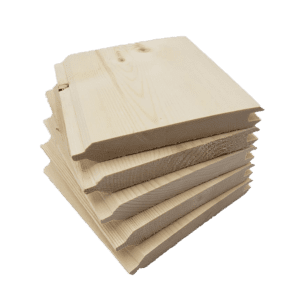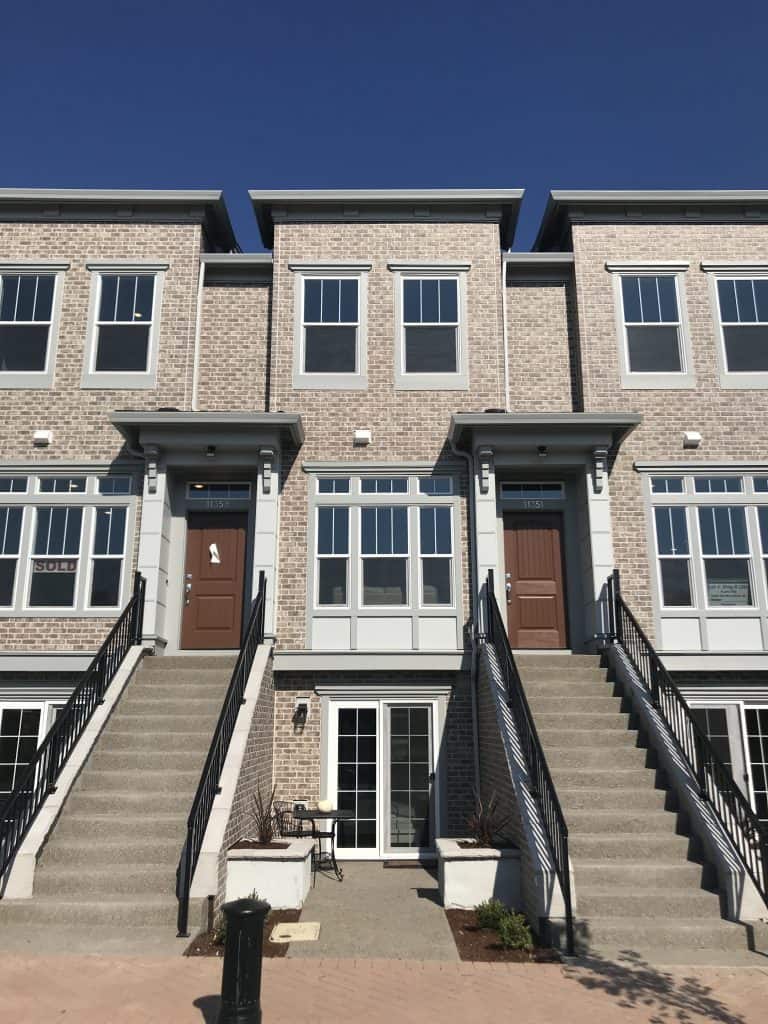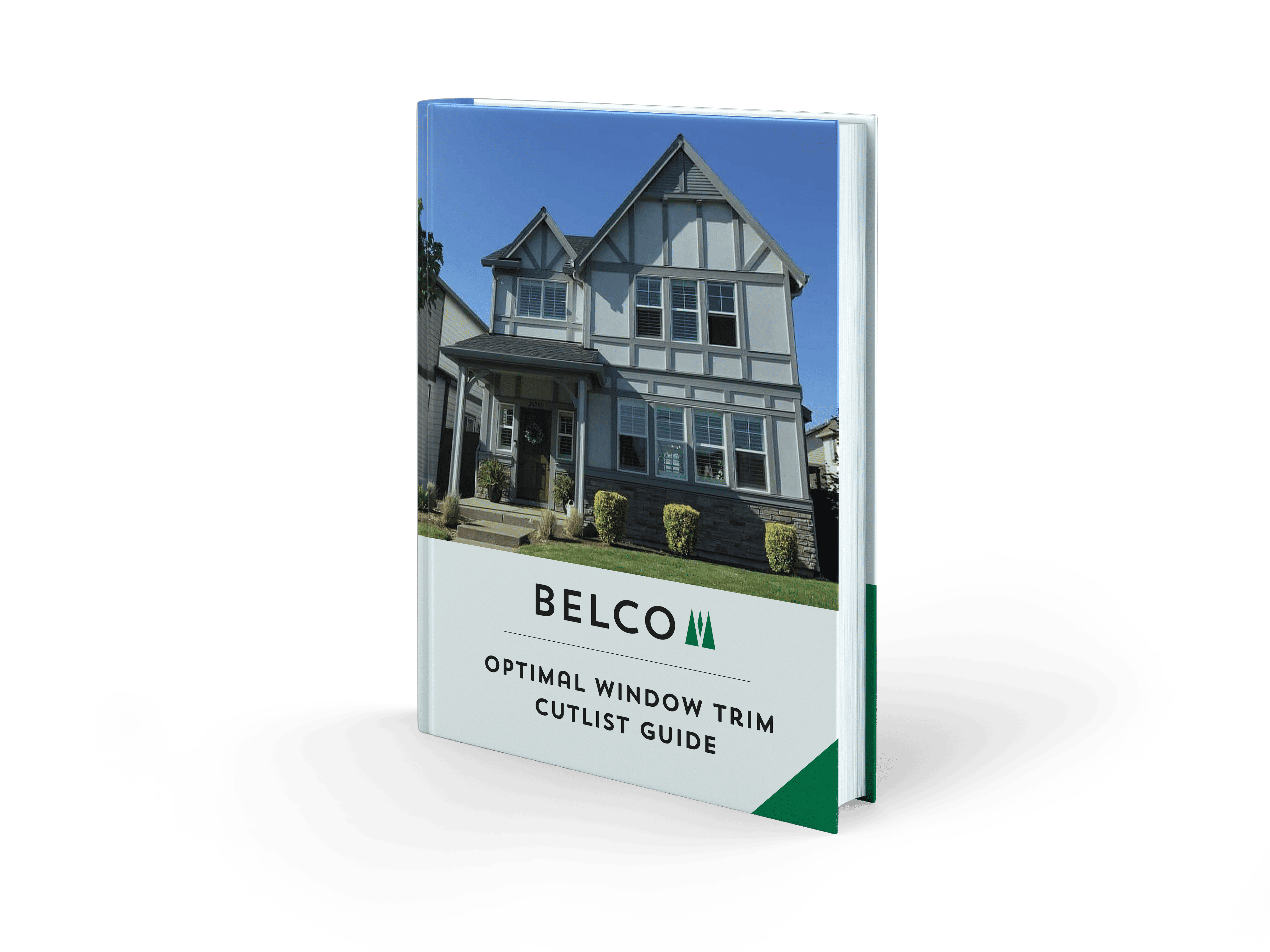Real Wood Fascia
It is important to know why you should choose preservative treated wood fascia over all the other options available. Fascia systems tie roof framing truss tails together and protect them from moisture exposure. But the ends of truss tails are vulnerable to moisture penetration. Gutters will ‘sweat’ moisture. Over time board tails will experience rot and decay from this contact.
A far wiser option is to use a good fascia board to provide a solid surface and additional protection to the trusses.
Real wood fascia systems are easy to install, generally lightweight, and structurally strong.
It is a very eco-friendly product, being manufactured from real wood from sustainably managed forests.
In the real wood category, the most common materials for fascia are primed white wood, western red cedar, and preservative treated fascia.
Preservative Treated Wood Fascia
Belco XT® Trim wood fascia is a preservative treated, primed white wood fascia material. It is an SPF trim, meaning it’s comprised of three prolific species. These species include: Engleman Spruce, Lodgepole Pine, and Alpine Fir. SPF has a high strength-to-weight ratio. It is three times lighter than fiber cement. Yet, it is eight times stronger in terms of bending strength.
It is an excellent option for fascia for builders and homeowners alike.
XT Trim is easy to install and is a great barrier against moisture transfer to truss tails.
It accepts paint exceptionally well and enhances any architectural design.
Western SPF J grade (Japan export grade) is the highest quality of SPF on the market. Belco uses a mix of J grade and premium grades to ensure a straight, stable, highly appealing end-product.
But what really sets XT preservative treated fascia apart?
The answer is the extra steps of protection in the manufacturing process. Belco applies to each raw wood board a highly superior preservative made by Belco is Wolman® AG by Lonza. This preservative penetrates directly into the board surface.
After the surface is dry, each board is primed with 6 mils of quality primer. The process concludes with oven-drying for a superior, durable, protective finish.
In fact, Belco XT® Trim comes with a 20-year warranty against mold, mildew, and rot.
Combine this with the availability of 10-20′ lengths and you have the clear winner for a fascia board material.
In addition, all these great features are available in XT Trim by Belco at a budget-friendly price.
Primed White Wood Fascia
Primed white wood has gotten a bad reputation over the years, and rightly so. PWW is susceptible to exposure from the elements, especially when improperly manufactured.
However, preservative treated wood fascia by Belco XT® has a better performance against rot than you may think. In fact, it comes with a 20-year warranty against decay and rot.
Both cedar and primed white wood fascia offer similar values from a structural point of view.
You can read our informative article about moisture and how it is at the root of decay and rot issues in our article Moisture: The Root of Many Problems In Exterior Trim.
Cedar may seem like the best option for fascia, but we haven’t tallied the costs yet.
Western Red Cedar Wood Fascia
Western Red Cedar is an excellent choice for fascia board. It is naturally weather-resistant, fairly strong, easy to install, and easily adapts to any architectural style.
Cedar can be left to age to a natural grey or it can be stained. It will enhance the look of whatever house it is attached to.
There is a downside though, and it’s often a deal-breaker. The cost for cedar is by far the most expensive option for fascia board.
Cedar makes an excellent exterior trim with its straight grain and beautiful natural color. However, it is very expensive and does not take paint particularly well. The cedar in today’s market is not the rot resistant titan of yesteryear because of shortened harvesting schedules.
If budget is a non-issue, then cedar is a great choice. But, cedar is TWICE as costly as PWW. Yikes.
Hem-Fir and Southern Yellow Pine
Hem-Fir and Southern Yellow Pine rarely show up as exterior trim. Two reasons: Hem-Fir is considered a non-durable wood susceptible to rot and insects. SYP is also considered non-durable, has large knots and loose grain patterns. Both species are prone to movement over time.
Other Non-Real Wood Fascia Board Options
Other fascia board options are often made from man-made processes. Some products have wood fibers mixed with resins and some have no wood components at all.
Fiber Cement
Fiber cement fascia provides a higher level of protection to the truss tails than using a fascia-less gutter system.
They are very durable in that the boards do not rot.
However like all concrete based products, fiber cement can sweat, which may not transfer as much moisture to the truss tails as a raw gutter, but it sure isn’t zero either.
Fiber cement is heavy and harder to install than most products. It is only available in 12′ lengths and requires special blades to cut it.
There are other issues with installation.
For example, a sider will use a “Hardie” blade to cut lap siding all day. But they’ll have to stop and change the blades in order to cut fiber cement fascia.
Furthermore, some states now require a vacuum saw and the use of a respirator to minimize the amount of silica dust the installer breathes.
Fiber cement can be more problematic to install than real wood or OSB.
OSB Based Products
OSB based products such as LP Smart Trim or Collins True Wood are commonly used fascia products in much of the USA.
Oriented Strand Board performs quite well in arid areas and is an adequate moisture barrier to protect the truss tails from moisture transfer from the gutters.
However, the products are quite heavy. If weight isn’t an issue, then they are easy to install. They are very durable due to the resins and nature of their manufacture.
Unlike fiber cement, OSB doesn’t sweat. It is available in 16′ lengths, making for a quicker install.
OSB based products are also very stable. Typically eliminating cupping and twisting issues.
However, there are some drawbacks. OSB products have a coarse edge that shows an unfinished end. It makes matching paint jobs difficult as well.
In addition, the ends are prone to swelling when the raw ends are exposed to moisture. Once boards swell, they don’t resume their original shape.
Not only is swelling unsightly, but it also lowers the value of the home.
Fascia-less Gutter Systems
Fascia-less gutter systems bring significant savings to your bottom line and are commonly used by production home builders.
With a cost saving of over $250 per home, that sounds pretty good. However, there are some serious drawbacks to not using a fascia.
A lack of fascia can appear to cheapen the overall look and the esthetic of the architectural design of a home.
Perhaps the most serious drawbacks are a few issues that won’t show up right away.
Let’s take a look at two of them.
Two Issues to Consider
Firstly, fascia-less gutter systems leave no attachment point for the very ends of the bargeboard (required wherever there is a gable). Without having a nailing point at the end of the barge it is much more likely for the ends of the barge to cup or twist, leaving an unsightly gable end.
Though not terribly attractive, cupping and twisting can be fixed relatively easily. What you can’t fix is far worse.
Secondly, if there is no fascia board attached over the ends of the roof trusses then the gutter is attached without a critical layer of protection on the truss ends.
Roof trusses in all new homes are manufactured from standard, non-treated lumber. A thin PVC or aluminum gutter butted right against the butt end of a non-treated (and very structural piece of the home’s framing) is always a bad idea. For instance, as the gutter sweats, it easily transfers water to the end of the truss. This will increase the chances of rot and decay.
The only protection against water damage and rot is one or two thin coats of paint when there is no fascia. We all know how that turns out.
With a fascia-less option, you’ll need to decide how much a small upfront cost savings is worth compared to the possible high cost of repairs down the line.
















